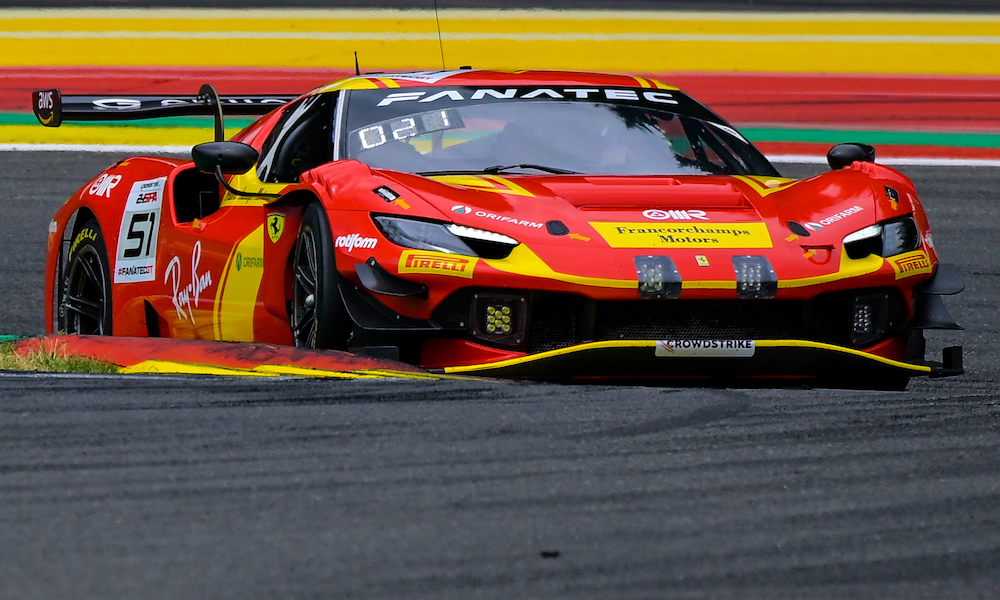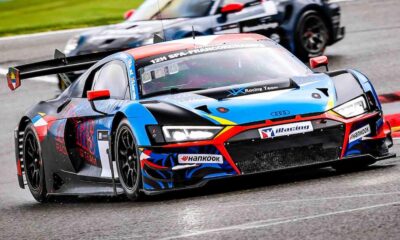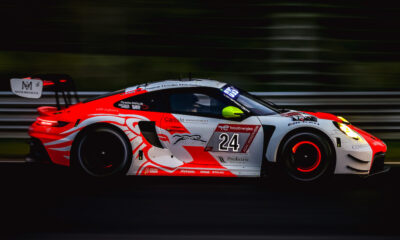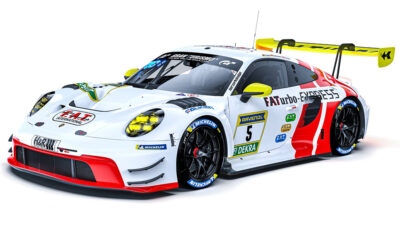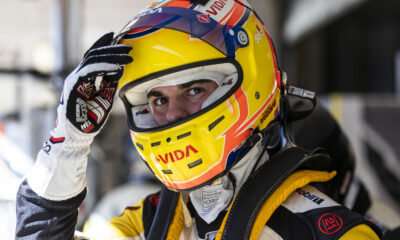Ferrari could complete a triple of the major European 24-hour races at this weekend’s CrowdStrike 24 Hours of Spa, with its head of endurance race cars noting that it ‘needs to do the same’ distraction-free approach that was applied at Le Mans and the Nürburgring.
The Italian manufacturer has so far had a successful changeover season for its sports car racing division that saw the debut of new cars built for the LMH and GT3 regulations.
Six weeks ago, Frikadelli Racing Team won the Nürburgring 24 with a privateer Ferrari 296 GT3 driven by David Pittard, Nicky Catsburg, Earl Bamber and Felipe Fernandez Laser.
That landmark result — the first N24 win for a non-German brand in 21 years — was followed in June by overall honors at the centennial 24 Hours of Le Mans with Alessandro Pier Guidi, James Calado and Antonio Giovinazzi sharing a factory AF Corse Ferrari 499P.
Victory at Spa, where Ferrari prevailed with Iron Lynx two years ago, would complete an elusive triple crown that has only been achieved twice before, by Audi in 2012 and 2014, since the Nürburgring and Spa became GT races around the start of the 21st century.
The No. 51 AF Corse Ferrari of Alessio Rovera, Robert Shwartzman and Nicklas Nielsen will start the Belgian enduro from second on the grid, with the teammate car in 47th.
“If I go two steps back and I imagine myself at the Nürburgring, I was not even thinking to achieve that result,” said Ferrari’s head of endurance race cars Ferdinando Cannizzo, who is believed to have been the only person with an on-site role at each of the three races.
“We started very humble and said that it would be tough and that we hoped to arrive at the end.
“After two hours, we were a little bit more confident about the car itself and the performance, and saw the results.
“But after that, we completely forgot and put our minds to a new race: Le Mans. Same story, actually. We were completely focused on doing good work and not being distracted by something else.
“I think we need to do the same here. To be honest, we are not thinking about anything else. If you see it from a different perspective, we may realize a kind of grand slam, but it’s still difficult.”
Cannizzo described the “great satisfaction” of already achieving a 24-hour victory with each of its new cars, which were developed simultaneously and often shared the track during tests last year.
He said: “It’s a sign that what has been done, all the sacrifice that the team did, the time that was stolen from their families, all the effort put in and switching from one car to the other with different problems. It’s paid off, in the end.
“Great results for Ferrari, because we never won at the Nürburgring and won at Le Mans in the first attempt after 50 years from the last participation, and 58 years from the last win.
“It was an outstanding achievement for the company and the team. At the same time, we know very well that the two cars are still young. A lot of work still has to be done to arrive at the expected level.
“We cannot stop here, just because we had some fantastic results. The team is already there, but the difficult stuff is to switch back like nothing happened and to keep working as we do now.”
Despite recording early major successes with the 296 GT3 and the 499P, Cannizzo believes there is room for improvement based on the foundations laid this year.
The GT3 car won at the Nürburgring but had an understated start to its maiden Fanatec GT World Challenge Europe powered by AWS Endurance Cup season, finishing eighth and 14th at the Monza season-opener.
AF Corse then improved to fifth and seventh at the Paul Ricard 1000km before Rovera put the No. 51 machine on the front row of the grid for Spa in the Superpole shootout.
“What gives us the confidence is that the approach we took — all the effort, methodology and decisions — were successful,” Cannizzo reckoned.
“We’ve proven that by approaching the fault management in the way we did, it gives us the opportunity that, [although] still not as mature as we would like, is able to run for 24 hours without issues in GT3 and LMH.
“This is good for the team because the methodology has been correct.
“Now that we have this confidence, we need to keep and exploit the methodology to push the car to the right level.
“The base is good, and now we need to work around this base to make the cars stronger.”


